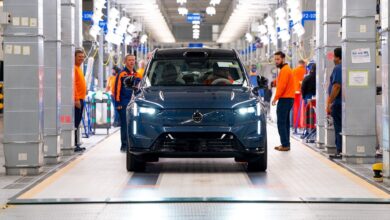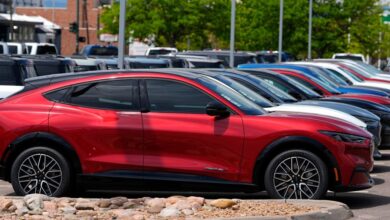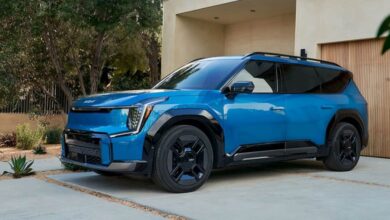The EV battery ‘catch-22’ | Pennsylvania

(The Center Square) – While setting aggressive goals for electric vehicle market share, the Biden administration also wants tariffs and or restrictions on the importation of vehicles and the minerals needed for their batteries – creating heightened concerns over supply chains in what can be described as a “Catch-22” situation.
Solutions to some of the problems include battery recycling and increased domestic mining, however, the U.S. is currently limited in its capacity for both. Federal funds are spurring new recycling plant projects, but questions remain on whether there will be enough used material to meet projected needs.
In his e-book, “The EV Transition Explained,” Robert Charette, longtime systems engineer, and contributing editor for IEEE Spectrum, says making the transition is harder than anyone thinks. He recently told The Center Square it is truer now than it ever was.
“None of this is simple,” he said.
His argument centers on the lack of planning and systems engineering on initiatives that are politically, not engineering, driven. While change is possible, he suggested it would require trillions more in government spending and enforcing those changes through law.
Charette identified many serious issues in setting up the EV battery infrastructure – and even if those challenges are met, he said, there may be tradeoffs between affordability, security and environmental concerns.
Profitability. Battery recycling is a still-developing process which is time consuming and expensive. The cost of purchasing recycled materials may be more costly than buying them new.
Manufacturing demand and potential backlog. The U.S. will require eight million batteries annually by 2030 to meet the government’s EV target, with increases each year after that.
Standardization. Batteries vary in configuration, size, and chemistry.
Domestic mining. While decreasing our dependency on outside sources, what are the environmental impacts? It can also take years to acquire permits and get a lithium mine up and running.
Mineral shortfalls. Secure and sustainable access to critical minerals like copper, lithium, cobalt, and nickel is essential for a smooth and affordable transition to clean energy. An analysis by the International Energy Agency indicates a “significant gap” between the world’s supply and demand for copper and lithium. Projected supplies will only meet 70% of the copper and 50% of the lithium needed to achieve 2035 climate targets.
The report said that “without the strong uptake of recycling and reuse, “mining capital requirements would need to be one-third higher. The agency also emphasizes China’s dominance in the refining and processing sector.
Transportation of discharged batteries classified as hazardous waste is one of the costliest steps of the recycling process. Experts suggest updates to federal EPA and DOT regulations for how battery-related waste is classified. In addition to health and safety, they say clearer definitions of what constitutes hazardous waste would help reduce transportation costs. Many recycling plants are being built in regions where production sites are located to address this.
Supply chain and skills gap shortages. The timetable set by the government is not aligned with the capabilities of the current supply chain. Software plays a key role in the management and operation of an EV battery, and automakers are competing for a limited supply of software and systems engineers.
Competing interests. The goal is to create a circular battery economy, reducing the need for raw materials. However, an EV battery that is no longer useful for propelling a car still has enough life left for other purposes such as residential energy storage. Experts propose a battery material hierarchy where repurposing and reusing retired EV batteries are more favorable to immediately recycling them, detouring them out of the cycle.
Charette says the biggest problem with recycling projections is that they are built on assumptions that have not been tested.
“We won’t know whether these assumptions hold until we reach a point where we are recycling millions of EV batteries,” he said.
Because most EV lithium-ion batteries produced through 2023 are still on the road, the International Council on Clean Transportation reports that the majority of materials being used as feedstock by recycling plants currently come from scrap materials created during battery production.
According to Charette, manufacturers also claim future generations of batteries will last 15 to 20 years, which he says would put a bigger kink in the used-battery supply chain.
Another issue contributing to consumers’ reluctance to buy an EV is the inability to determine the overall health of your battery. Current testing methods are inefficient and costly.
EV adoption has so far not met projections and with all the competing interests, Charette said the market will ultimately tell us what direction the situation is headed. He is also intrigued over the impact government pressure will have on the eventual outcome.
He said many individual components have yet to be worked out, adding that although there is a vision, “we’re a heck of a long way from that vision to getting where we need to go.”
In his opinion, battery recycling issues are even further behind than transitioning the electric grid to renewable energy sources.



